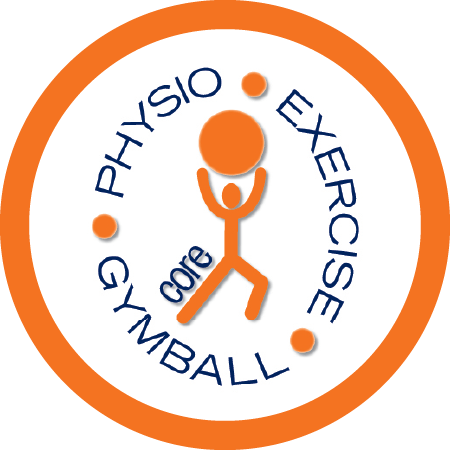Want exercises that strengthening your core muscles including the pelvic floor? Want to exercise, get fitter and stronger but ensure you don’t leak? Understanding what pelvic floor safe exercise is is important for many people, including pregnant, postnatal and post menopausal women, following gynaelogical surgery and even for elite athletes.
Pelvic floor safe exercises refer to exercises that place less stress on your pelvic floor. Good pelvic floor muscle tone supports our spine and assists men and women to maintain bladder and bowel control. It also helps reduce the risk of women developing a prolapse.
Some common signs of a pelvic floor weakness may include:
- accidentally leaking urine when you exercise, laugh, cough or sneeze
- finding it difficult to empty your bladder or bowel
- accidentally losing control of your bladder or bowel
- accidentally passing wind, or
- a prolapse (this may be felt as a bulge in the vagina or a feeling of heaviness, discomfort, pulling, dragging or dropping).
Trying to figure out what exercises are pelvic floor safe, and what aren’t can be tricky. As a general rule, try to avoid high impact or high intensity exercises that place downward pressure on your pelvic floor. Core Gymball classes offer a wonderful environment to exercise safely, learn when and how to activate the pelvic floor and ensure that you get stronger without damaging your pelvic floor muscles.
Who Is Most At Risk of Pelvic Floor Issues?
Pregnant, Postnatal or Ever Had a Baby
The softening effect of relaxin and the increasing weight of your baby in pregnancy places pressure on your pelvic floor muscles. This can make it harder for the muscles to hold your pelvic floor organs in their correct position. The pelvic floor muscles and ligaments are also stretched at birth, which can sometimes lengthen the tissues permanently.
If you have recently had a baby, it is important to reduce the strain on your pelvic floor muscles (especially in the first few months) to help them to recover. Some easy ways to do this include easing back into exercise and making sure your exercise program is low impact, not lifting unless absolutely necessary, and turning on your pelvic floor before you lift, sneeze or cough.
Some women are more at risk of pelvic floor problems during pregnancy and childbirth than others. These include women who have had:
- multiple births or large babies over 4kg
- instrumental births (using forceps or ventouse) and long second stage of labour (over 1 hour) or
- severe perineal tearing
Pelvic floor muscle exercises are an effective way to maintain your pelvic floor fitness during and after pregnancy.
Sensible, controlled return to exercise following childbirth is crucial for pelvic floor health. Unfortunately the current media trend is often not a pelvic floor safe message – running, jumping and boot camps are the worst thing that new Mums can do for their pelvic floor muscles.
Menopause
Menopause is a time of change in a woman’s life. One of the many changes a woman may notice is increased difficulty controlling her bladder or bowel. Symptoms include urinary frequency (constantly needing to go to the toilet) or bladder urgency (needing to get to the toilet in a hurry or not making it there in time).
Pelvic floor muscle exercises are important during this period of a woman’s life, and can be very beneficial if done correctly. The pelvic floor is just like every muscle in our body – if we exercise it, we can strengthening it – no matter what our age.
Gynaelogical Surgery
Gynaecological or pelvic surgery such as a hysterectomy or pelvic radiotherapy can result in bladder problems. Research shows that good pelvic floor strength is an important factor in the success of some gynaecological surgeries.
Elite Athletes
Elite athletes such as gymnasts, trampolinists and runners, or people who play high impact sports such as basketball, netball or running, are at increased risk of developing pelvic floor problems. This is because of the constant and excessive downward pressure that these sports place on their pelvic floor.
For more information on Core Gymball classes please email us or call (02) 9545 0134 / 0438 448 738. To book a consultation with a Women’s Health Physiotherapist in Menai we recommend Secret Women’s Business Physiotherapy www.swbphysio.com.au or call (02) 9545 0134 to arrange an appointment.
10 Tips to Pelvic Floor Safe Exercise
1. Avoid heavy lifting
Keep your weights within a manageable range. Never lift heavy weights that make you strain or inclined to hold your breath.
2. Use your pelvic floor muscles
Lift your pelvic floor muscles prior to and during your resistance exercises, and relax fully between sets or repetitions. The goal is for your pelvic floor to be working immediately before and as you lift/lower/push or pull. See a women’s health physio if you’re not sure how to activate your pelvic floor muscles.
3. Lift with good posture
Maintain the normal inward curve in your lower back during every lift/lower/push/pull exercise you do, regardless of whether you are sitting, standing or lying on your back. This will promote the protective activity of your supportive deep abdominal and pelvic floor muscles.
4. Exhale with every effort
Never hold your breath or pull your stomach in strongly during your exercise as this increases the downward pressure on your pelvic floor. Breathe out with every effort, whether it is a lift, push or pull, to reduce the likelihood of straining your pelvic floor.
5. Choose supported positions
Your pelvic floor will be under less strain if you perform your resistance exercises sitting or lying down wherever possible. Sitting on an exercise ball is an excellent option while you perform your strength exercises. It will promote the activity of your deep abdominal muscles, support your pelvic floor, decrease the likelihood of symptoms as you exercise, and make it easier to feel your pelvic floor muscles working.
6. Keep your feet close together
You will find it easier to activate your pelvic floor muscles when your feet are closer together.
7. Strengthen gradually
Start using light resistance and pay attention to performing the exercise correctly to reduce your risk of injury. Gradually increase your load when you are confident of your technique and when you have good pelvic floor and abdominal muscle control.
8. Take care when fatigued or injured
When you are very tired, unwell or have lower back pain, your pelvic floor and deep abdominal muscles may not work as effectively and you will be more prone to symptoms and injury. Take a break and return to resistance training when you have recovered.
9. Rest between sets
Rest for a couple of minutes between each set of exercises you perform. This gives your muscles (including your pelvic floor muscles) time to recover before your next lift.
10. Avoid aggravating exercises and machines
Listen to your body when exercising. If your symptoms are worse with a specific exercise, modify that exercise or leave it out of your program and perform another exercise to strengthen the same area.

